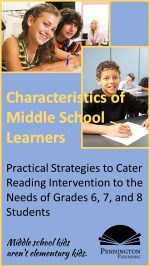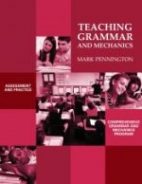Don’t Teach to Learning Styles and Multiple Intelligences
Most teachers believe in some form of learning styles or multiple intelligences theories. The notion that each child learns differently, so we should adjust instruction accordingly (learning styles) just seems like such good old-fashion common sense. The theory that each child has different innate abilities (multiple intelligences) just seems to be confirmed by common experience. But common sense and experience are often untrustworthy and unreliable guides to good teaching. Despite what we’ve thought or heard about why we should be teaching to learning styles and multiple intelligences, these brain-based teaching approaches are simply without merit. Here are five reasons why.
1. We don’t know enough about how the brain works to change the way we teach. What we do know about the brain suggests that catering instruction to specific modalities can be counter-productive. Knowledge is stored in the form of memories and only 10% of those memories are visual and auditory representations. Meaning-based memories make up the 90% (Willingham on Learning Styles Don’t Exist–TeacherTube). Those impressive-looking illustrations of the brain on the Universal Design for Learning site and interesting graphic organizers on the multiple intelligences sites hopelessly simplify what we know is a far more complex subject. Daniel T. Willingham, cognitive psychologist and neuroscientist at the University of Virginia advises districts, schools, and teachers to “save your money” on any brain-based instructional in-services or instructional resources. See Willingham’s excellent YouTube video on the fallacy of brain-based instruction. Another great one is a Ted Talk by Tesia Marshik, Assistant Professor of Psychology at the University of Wisconsin.
2. Research does not support adjusting instruction according to learning styles or multiple intelligences theories. To sum up his extensive meta-analysis of modality research, Willingham states “…we can say that the possible effects of matching instructional modality to a student’s modality strength have been extensively studied and have yielded no positive evidence. If there was an effect of any consequence, it is extremely likely that we would know it by now (American Educator 1995).” With respect to research on multiple intelligences, “The fundamental criticism of MI theory is the belief by scholars that each of the seven multiple intelligences is in fact a cognitive style rather than a stand-alone construct (Morgan, 1996). Morgan, (1996) refers to Gardner’s approach of describing the nature of each intelligence with terms such as abilities, sensitivities, skills and abilities as evidence of the fact that the “theory” is really a matter of semantics rather than new thinking on multiple constructs of intelligence (http://www.indiana.edu/~intell/mitheory.shtml),” Frankly, the essential variables of motivation, preference, teacher perception, and the learning tasks themselves probably cannot ever be isolated in an experimental design, thus prohibiting statistically significant conclusions regarding how students learn best and how teachers should teach.
3. Learning styles and multiple intelligences theories beg the question about how students learn. The assumption is that students learn best by receiving instruction in their strongest modality or intelligence. This may make sense for designated hitters in the American League. Allow me to explain. In the American League, pitchers rarely bat; instead, designated hitters bat for them. The designated hitter does not play in the field. It would make sense for the designated hitter to practice according to his modality strength. Developing kinesthetic expertise in slugging home runs will earn him his multi-millions. But exclusive kinesthetic batting practice will not help him become a better fielder. There is no learning transfer. We certainly don’t want designated hitters in our classrooms. We want students to be complete ballplayers. In fact, it makes more sense to practice our relative weaknesses. Why should kinesthetically adept Johnny continue to make project after project rather than practicing in his areas of relative weakness: oral (auditory, aural) and written (visual) communication?
4. By emphasizing the how of instruction, learning styles and multiple intelligences practitioners lose sight of the what of instruction and tend to force square blocks into round holes. For teaching input to be processed and stored in the memory, that input has to match how the information will be stored. Little of what we teach will be stored as visual or auditory representations. This does not mean that good teaching won’t use the visual or auditory domains, but the focus of most all of our instruction is meaning-based. We want our students to know stuff. We have to match the how of instruction to the what of instruction, not the reverse. “All students learn more when content drives the choice of modality (Willingham in American Educator 1995).” It should go without saying that if a child has, for example, an auditory processing disability, the how of instruction should be limited in that modality. Similarly, adapting learning tasks to perceived student intelligences is impractical for the vast majority of our teaching standards. A student with musical intelligence still needs meaning-based practice to understand the roles of the executive, legislative, and judicial branches of government.
5. Although learning Styles and multiple intelligences theories seem individual-centered and egalitarian on the surface, the converse is more likely true. The practical applications of these theories tend to pigeon-hole students and assume that nature plays a greater role in learning than does nurture. For example, teachers disproportionately tend to label African-American children, especially boys, as kinesthetic learners and Asian kids are more often classified as visual learners. Being labeled limits options and dissuades effort and exploration. Learning styles and multiple intelligences assessments particularly have this egregious effect. Our students are not stupid. Labeling them as “good at” and “has strengths in” also labels them as “bad at” and “has weaknesses in.” Students “shut down” to learning or “self-limit” their achievement with such labels. If limited to what the students know and don’t yet know, assessments data can be productive. If extended to how students learn, data can be debilitating. Additionally, who is to say that how a student learns remains a constant? Teachers certainly have an important role in nurturing motivation, risk-taking, and exploration. Teachers should be about opening doors, not closing doors.
Unfortunately, the differentiated instruction movement has largely adopted learning style and multiple intelligence theories. Check out why differentiated instruction should be more about the what and less about the how in 23 Myths of Differentiated Instruction. As we move ahead in the Response to Intervention process, this subject of how to best serve students with learning challenges is especially relevant. Readers may also wish to check out the author’s introductory article: Learning Styles Teaching Lacks Common Sense.
When we talk about differentiating instruction for struggling readers, we need to allow the data to drive our instruction. Good assessments can provide the what must to be learned by each student. The how may be small group instruction, guided reading, readers workshop, literacy centers, individual tutoring, and/or direct instruction. A variety of instructional methodologies work well, but they must be informed by data.
*****

The Science of Reading Intervention Program
The Science of Reading Intervention Program: Word Recognition includes explicit, scripted, sounds to print instruction and practice with the 5 Daily Google Slide Activities every grades 4-adult reading intervention student needs: 1. Phonemic Awareness and Morphology 2. Blending, Segmenting, and Spelling 3. Sounds and Spellings (including handwriting) 4. Heart Words Practice 5. Sam and Friends Phonics Books (decodables). Plus, digital and printable sound wall cards, speech articulation songs, sounds to print games, and morphology walls. Print versions are available for all activities. First Half of the Year Program (55 minutes-per-day, 18 weeks)
The Science of Reading Intervention Program: Language Comprehension resources are designed for students who have completed the word recognition program or have demonstrated basic mastery of the alphabetic code and can read with some degree of fluency. The program features the 5 Weekly Language Comprehension Activities: 1. Background Knowledge Mentor Texts 2. Academic Language, Greek and Latin Morphology, Figures of Speech, Connotations, Multiple Meaning Words 3. Syntax in Reading 4. Reading Comprehension Strategies 5. Literacy Knowledge (Narrative and Expository). Second Half of the Year Program (30 minutes-per-day, 18 weeks)
The Science of Reading Intervention Program: Assessment-based Instruction provides diagnostically-based “second chance” instructional resources. The program includes 13 comprehensive assessments and matching instructional resources to fill in the yet-to-be-mastered gaps in phonemic awareness, alphabetic awareness, phonics, fluency (with YouTube modeled readings), Heart Words and Phonics Games, spelling patterns, grammar, usage, and mechanics, syllabication and morphology, executive function shills. Second Half of the Year Program (25 minutes-per-day, 18 weeks)
The Science of Reading Intervention Program BUNDLE includes all 3 program components for the comprehensive, state-of-the-art (and science) grades 4-adult full-year program. Scripted, easy-to-teach, no prep, no need for time-consuming (albeit valuable) LETRS training or O-G certification… Learn as you teach and get results NOW for your students. Print to speech with plenty of speech to print instructional components.
Click the SCIENCE OF READING INTERVENTION PROGRAM RESOURCES for detailed program description, sample lessons, and video overviews. Click the links to get these ready-to-use resources, developed by a teacher (Mark Pennington, MA reading specialist) for teachers and their students.
Get the SCRIP Comprehension Cues FREE Resource:
![]()
Get the Diagnostic ELA and Reading Assessments FREE Resource:![]()
*****








